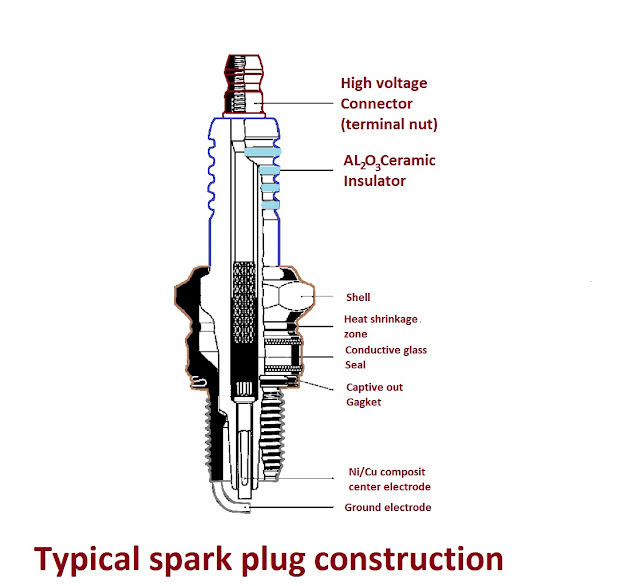Audi car spark plug design
Audi car spark plugs
The function of the spark plug in the Audi car
A spark plug is usually the end component of the ignition system in any petrol car. Spark plugs must be competent to withstand the high temperature and pressure of the combustion chamber. The ignition occurs billions of times during car engine start condition.
The ability to dissipate heat is the most important characteristic of the spark plug. The central electrode of the spark plug should be hot enough to burn out any carbon accumulation on it during the engine reaches the normal operating temperature. Also, the electrode should not be heated enough that it could burn the central insulator. The central insulator is very important as it separates the central electrode from short-circuiting to ground.
Cold spark plug
The cold spark plug is referred to as the spark plug which transfers the heat produced by the combustion process fast through the threads to the head of the engine from where it would spread to the cooling system of the car.
Hot spark plug
The hot spark plug is the spark plug that transfers the heat slowly from the combustion process through threads to the engine head from where the heat would be spread to the cooling system of the vehicle.
Types of spark plugs required for different Audi engines
Different engines require different spark plugs. The spark plug has different electrical and physical characteristics. Different manufacturers offer different spark plugs with different characteristics. As engine manufacturers specified the type of plug for their particular engine, it is better to replace the spark plug with the exact characteristics as the can engine manufacturer suggested and specified.
To ensure proper heat transfer from the spark plug to the engine head, it is important to tighten the spark plug into the engine head according to the torque specified by the factory. Values of torques are mentioned in the factory service and repair manuals.


Comments
Post a Comment